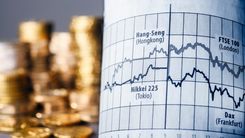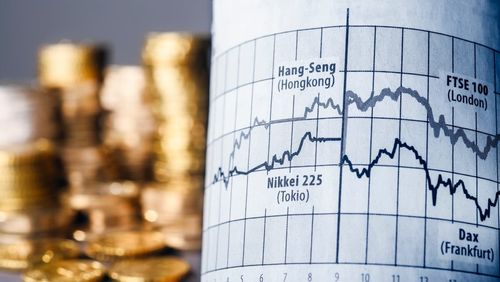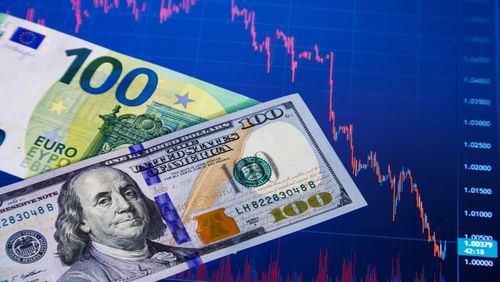Buried beneath the market lies a remarkable force. It lurks within the mathematical equations that govern derivatives. We’re talking about stock market gamma. It sounds geeky and boring but its impact is simple: when the market is positive gamma, it’s less volatile; when it’s short, things can get moving. It creates a feedback loop. Welcome to the power of gamma.
What is stock market gamma, then?
Put simply, gamma is the change in an option’s delta for a given move in the price of the underlying asset. If you think that doesn’t sound simple, you’d be right.
Let’s go back to the basics of how derivatives work. Once we know that, we will explain how it affects the whole market.
Options
As you know, options are instruments that give the owner the right, but not the obligation, to buy or sell the underlying asset. As the name suggests, they give you a choice. For example, a call option on 10,000 shares of Apple is the right to buy those shares in the future at an exercise price that we strike today. You might decide not to exercise that right when the time comes, because markets move around. That’s very different to just buying Apple today. You own it at today’s price. The option gives you much more flexibility.
Pricing
The flexibility that comes with an option means that it’s more complicated to determine its price. A share in Apple is $315. That reflects the equity value of the company. But an option on Apple? There’s more factors to consider. More uncertainty about the future. What happens if markets get more volatile? What happens if your option is long rather than short dated? What interest rate would your money earn at the bank if you left it there and didn’t own this option? All of this was boiled down into the Black-Scholes Options Pricing model, which took into account the volatility of the asset, the length of time until the option expired, and the risk-free rate, amongst other factors.
The Greeks
The price of a share in Apple can go up or down. But with options all of these other factors can go up or down. That means managing the risk of an option is more complicated. A market-maker in Apple stock just has to cover the bid-offer spread. But a market-maker in Apple options has to consider how to cover all these other factors, like how volatility moves and time ticks by until the options expire. But don’t worry, because there’s a mathematical model to cover all of that too. And each factor is represented by a Greek letter.
Why are the Greeks important for trading stocks?
Options market-makers spend their time trying to cover all of their Greek risk. Think of it like a game of whack-a-mole: they flatten their exposure to time, but then exposure to volatility pops up. They flatten that, but then exposure to interest rates pop up. It’s much more exhausting than just simply being exposed to a stock price going up or down. But it also offers plenty more opportunities to make money.
Delta
You might remember Delta from your algebra classes where it simply refers to a “change”. When it comes to derivatives it refers to how the price of the option changes as the underlying asset price changes. So when the price of Apple moves, the price of options on Apple changes by its delta.
Gamma
Now we are back to where we started. Stock option gamma is the change in delta. Once market-makers know this number, they can automatically hedge their positions. The game of whack-a-mole requires hardly any effort. Just set the machines to calibrate the maths, and bingo their positions are covered.
How the financial crisis affected stock market gamma
For a long time gamma in the stock market didn’t matter much at all, except to the option nerds like those of us at BlondeMoney. But then something happened. After the financial crisis, more and more cheap money was pumped into the system. The authorities wanted to make sure that we would all take risk, and lots of it. If not, we could have disappeared into a debt deflation trap out of which we might never have recovered. This effectively mandated the short volatility trade, distorting the price of risk.
Remember that volatility affects the price of options. As everyone sold volatility, market-makers owned something that kept falling in price. They had to cover this risk. In the game of whack-a-mole, the little blighter marked volatility kept popping up no matter how hard they tried to shove it back down. It meant that every day volatility fell, they didn’t want to be left holding the long volatility hot potato.
What does positive gamma mean?
When market makers own all this volatility, they are positive gamma. To try and eke out some kind of return from this position, they have to buy low and sell high. And if prices aren’t moving around much, because it’s all lovely-wonderful-happy-no-volatility-in-sight times, then they have a smaller and smaller range out of which to make money. They’re all buying just below the market and selling just above, which tightens the range even further, making a rangebound market trade in an even tighter range.
Welcome to the power of gamma. It’s a feedback loop – a stock market gamma trap.
What happens to gamma when the stock market receives a big shock?
Suddenly there is a lot of volatility. People want to own it, and that leaves the market makers short of volatility just when it’s going up in price. To cover this position, their gamma exposure in the stock market reverses. They are buying as the market goes up and selling when it goes down. Gamma can also be a negative feedback loop.
Why is gamma in the stock market so powerful?
When everyone has the same position at the same time, and covers it the same way at the same time, its impact is magnified. That’s why stock option gamma is now such a powerful force. Everyone has the same mathematical models automatically hedging volatility positions the same way at the same time.
Has this changed since the stock market sell off?
No. In fact, the big switch from positive to negative gamma on the S&P500 helped to exacerbate the sell off. All that’s happened since then is renewed intervention from the authorities, which has started the short-volatility trade off again. The market is now in positive gamma territory, so it will be less volatile until there’s another unexpected shock. Like, say, a huge corporate earnings recession in the teeth of the worst economic downturn of our lifetimes.
But, even then, for this to cause a market crash, we would have to see gamma turn negative.
In conclusion, gamma is a powerful force and we ignore it at our peril.










